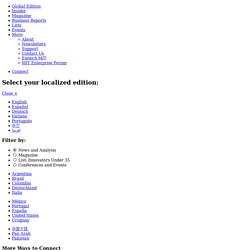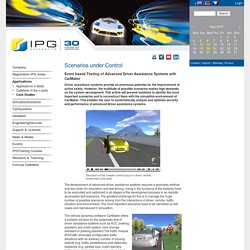

VRA Presentation 21 Idiada 1 Oct 2013. A Town Where Drivers Aren’t Needed. The site of Ann Arbor’s driverless town, currently under construction.

A mocked-up set of busy streets in Ann Arbor, Michigan, will provide the sternest test yet for self-driving cars. Complex intersections, confusing lane markings, and busy construction crews will be used to gauge the aptitude of the latest automotive sensors and driving algorithms; mechanical pedestrians will even leap into the road from between parked cars so researchers can see if they trip up onboard safety systems. The urban setting will be used to create situations that automated driving systems have struggled with, such as subtle driver-pedestrian interactions, unusual road surfaces, tunnels, and tree canopies, which can confuse sensors and obscure GPS signals.
“If you go out on the public streets you come up against rare events that are very challenging for sensors,” says Peter Sweatman, director of the University of Michigan’s Mobility Transformation Center, which is overseeing the project. Sperrgebiet: Keine Straßen für fahrerlose Autos. Wien.

„Das Automobil hat keine Zukunft. Es wird nie genügend Chauffeure geben“, prophezeiten Berater der New Yorker Regierung, als die ersten Autos in die Stadt drängten. Es kam anders, die Menschen fuhren einfach selbst. Doch inzwischen ist die Autoindustrie drauf und dran, auch dieses Problem zu lösen. Ihre Fahrzeuge werden in absehbarer Zeit ohne menschlichen Fahrer auskommen. Schon heute schicken BMW, Daimler oder Volvo Wagen zu Testzwecken allein auf die Reise. Autobahnen ohne Internet Im Moment sind die meisten Straßen für selbst fahrende Autos ohnedies Sperrgebiet. Google-Ergebnis für. Google-Ergebnis für.
Best Practices for Testing Safety Compliant Systems. 1.

Background on Functional Safety Standards Functional safety refers to process oriented safety certification standards that are applied to embedded systems for validation. As an example, IEC 61508 is a well-known functional safety standard that has been adapted to different industries such as automotive (ISO 26262) and medical (IEC 60601) and shares similarities to safety standards in the aerospace industry (DO-178B and DO-254). In addition to the lifecycle processes that are mandated for the embedded device to be certified, many of these standards enumerate similar lifecycle requirements for the qualification of the test system to be used. Manufacturers manage development of complex systems by incorporating functional safety practices into the lifecycle of products.
Figure 1. Back to Top 2. Producers need to start testing components and embedded software early in the product’s lifecycle to find defects earlier, thereby reducing the overall cost of product development. Figure 2. 3. Google-Ergebnis für. Iso26262 component reuse_webinar. Problem loading page. Achieving ISO 26262 Compliance with Reactis: Concepts Underlying ISO 26262. ISO 26262 prescribes a system of steps to manage the functional safety of automotive electrical/electronic (E/E) systems.

It is a road vehicle-specific adaptation of IEC 61508, and targets the safety of both the hardware and software components of automotive E/E systems. ISO 26262 is based on the concept of a safety lifecycle, shown in Figure 1, which consists of 6 phases: management, development, production, operation, service, and decommission. The goal of the standard is to maximize product safety by requiring specific steps to be taken during each of the phases.
This ensures that safety is taken into consideration from the earliest conception of a vehicle to the point when the vehicle is retired from use. This document focuses primarily on the development phase, since this is the step in which embedded software is designed, developed, and validated. 2.1 Automotive Safety Integrity Level Severity is a measure of the health consequences of an event. Probability Controllability 2.2 V Model. IPG: ADAS Development. In order to give the user a quick start in the model based testing of driver assistance systems, the upgrade package TestWare for Advanced Driver Assistance Sytsems, TestWare/ADAS, was integrated into CarMaker.

It contains test cases, test automation and post-processing routines to comprehensively test driver assistance systems by a mouse click. A test and evaluation catalogue that was developed by TÜV SÜD Automotive from real driving tests provided the basis for the identification of the most important test cases of TestWare/ADAS. It contains realistic scenarios which have been developed by means of findings from the risk analysis and the functional safety analysis. This basis test catalogue was enlarged by numerous scenarios that are hard to realize on the test track or in public traffic. Using the models and functions described above, the developed maneuver catalogue has been fully implemented in CarMaker.